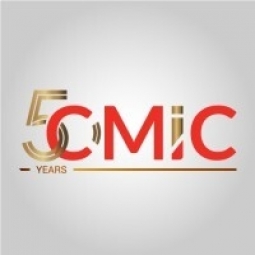MW Services' Digital Transformation and Operational Excellence with CMiC’s Construction-Specific ERP

Technology Category
- Cybersecurity & Privacy - Security Compliance
- Functional Applications - Enterprise Resource Planning Systems (ERP)
Applicable Industries
- Buildings
- Finance & Insurance
Applicable Functions
- Procurement
- Quality Assurance
Use Cases
- Cybersecurity
- Inventory Management
Services
- System Integration
- Training
About The Customer
MW Services Inc. is a minority and woman-owned small engineering and construction business based in Temecula, California. For over 20 years, the company has specialized in mission critical, multi-year Indefinite Delivery/Indefinite Quantity (IDIQ), Job Order Contracting (JOC) and Simplified Acquisition of Base Engineer Requirements (SABER) contracts for the federal government. The company has built a strong reputation for the effective delivery of projects that range from simple renovations to highly technical, classified buildings. At any given time, the company has multiple projects ongoing across the country.
The Challenge
MW Services Inc., a California-based engineering and construction business, was facing challenges due to its reliance on legacy systems and lack of integration. As the company grew, taking on more and larger contracts, the existing tools and processes were unable to keep up. The accounting system was outdated and there was no formal solution for project management, leading to disconnects, double data entry, and storage issues. The company needed a project management solution that could be interactive, multi-level, and include financial accounting for all its jobsites in multiple states. The transition to a new enterprise solution required careful planning due to the company's highly distributed business model. The company also faced challenges in getting buy-in from corporate and jobsite offices for the new system.
The Solution
MW Services began evaluating top ERP cloud-based solutions in 2019 and initiated the transition with an implementation deadline of July 1, 2020. The company chose CMiC’s construction-specific ERP for its digital transformation. The cloud-based solution provided real-time information, improving data visibility and joint venture account management. It also improved opportunity management by tracking costs associated with bidding on jobs, which was previously managed in a spreadsheet. The transition to CMiC also benefited MW Services in its work with the Naval Facilities Engineering Command, as the command's Electronic Construction and Facility Support Contract Management System (eCMS) is built around CMiC. Looking forward, the company plans to implement additional CMiC process workflows such as document control, drawing management, change management, and forecasting. The company also plans to deploy CMiC’s timekeeping module in 2022 and streamline work in progress (WIP) reporting.
Operational Impact
Quantitative Benefit

Case Study missing?
Start adding your own!
Register with your work email and create a new case study profile for your business.
Related Case Studies.

Case Study
Energy Saving & Power Monitoring System
Recently a university in Taiwan was experiencing dramatic power usage increases due to its growing number of campus buildings and students. Aiming to analyze their power consumption and increase their power efficiency across 52 buildings, the university wanted to build a power management system utilizing web-based hardware and software. With these goals in mind, they contacted Advantech to help them develop their system and provide them with the means to save energy in the years to come.

Case Study
Intelligent Building Automation System and Energy Saving Solution
One of the most difficult problems facing the world is conserving energy in buildings. However, it is not easy to have a cost-effective solution to reduce energy usage in a building. One solution for saving energy is to implement an intelligent building automation system (BAS) which can be controlled according to its schedule. In Indonesia a large university with a five floor building and 22 classrooms wanted to save the amount of energy being used.

Case Study
Powering Smart Home Automation solutions with IoT for Energy conservation
Many industry leaders that offer Smart Energy Management products & solutions face challenges including:How to build a scalable platform that can automatically scale-up to on-board ‘n’ number of Smart home devicesData security, solution availability, and reliability are the other critical factors to deal withHow to create a robust common IoT platform that handles any kind of smart devicesHow to enable data management capabilities that would help in intelligent decision-making

Case Study
Real-time In-vehicle Monitoring
The telematic solution provides this vital premium-adjusting information. The solution also helps detect and deter vehicle or trailer theft – as soon as a theft occurs, monitoring personnel can alert the appropriate authorities, providing an exact location.“With more and more insurance companies and major fleet operators interested in monitoring driver behaviour on the grounds of road safety, efficient logistics and costs, the market for this type of device and associated e-business services is growing rapidly within Italy and the rest of Europe,” says Franco.“The insurance companies are especially interested in the pay-per-use and pay-as-you-drive applications while other organisations employ the technology for road user charging.”“One million vehicles in Italy currently carry such devices and forecasts indicate that the European market will increase tenfold by 2014.However, for our technology to work effectively, we needed a highly reliable wireless data network to carry the information between the vehicles and monitoring stations.”

Case Study
Protecting a Stadium from Hazardous Materials Using IoT2cell's Mobility Platform
There was a need for higher security at the AT&T Stadium during the NFL draft. There was a need to ensure that nuclear radiation material was not smuggled inside the stadium. Hazmat materials could often be missed in a standard checkpoint when gaining entry into a stadium.







